Scaffolding Companies Seabrook
Top Scaffolding Builders in Seabrook
Get 3 FREE Scaffold Services quotes for your project today! Compare profiles, reviews, accreditations, portfolio, etc... and choose the best service.

Layher Scaffolding
51 reviews8225 Hansen Road, Houston, 77075, USLayher North America is a leading provider of scaffolding systems and solutions. With a strong presence in the United States and Canada, we offer a wide range of products and services designed to meet the needs of various industries, including construction, oil and gas, power plants, and more. Our scaffolding systems are designed to be safe, efficient, and cost-effective. We offer a variety of scaffolding solutions, including Allround Scaffolding, Layher Lightweight, SpeedyScaf Scaffolding, STAR Frame Scaffolding, and Rolling Towers. Our protective systems include Allround FW Roof, Keder XL Roof System, Cassette Roof, Protect System, and Edge Protection Railing Clamp. At Layher North America, we are committed to providing our customers with the highest level of service and support. Our team of experts is dedicated to helping you find the right scaffolding solution for your project. We offer pre-planning and optimization, on-site support and training, digital design and engineering, and scaffold information modeling. We are proud to be a part of the Layher Group, a global leader in scaffolding systems. With a strong presence in over 40 countries, we are well-equipped to meet the needs of our customers around the world.
- Services
- Why Us?
- Accreditations
- Gallery
Get Quote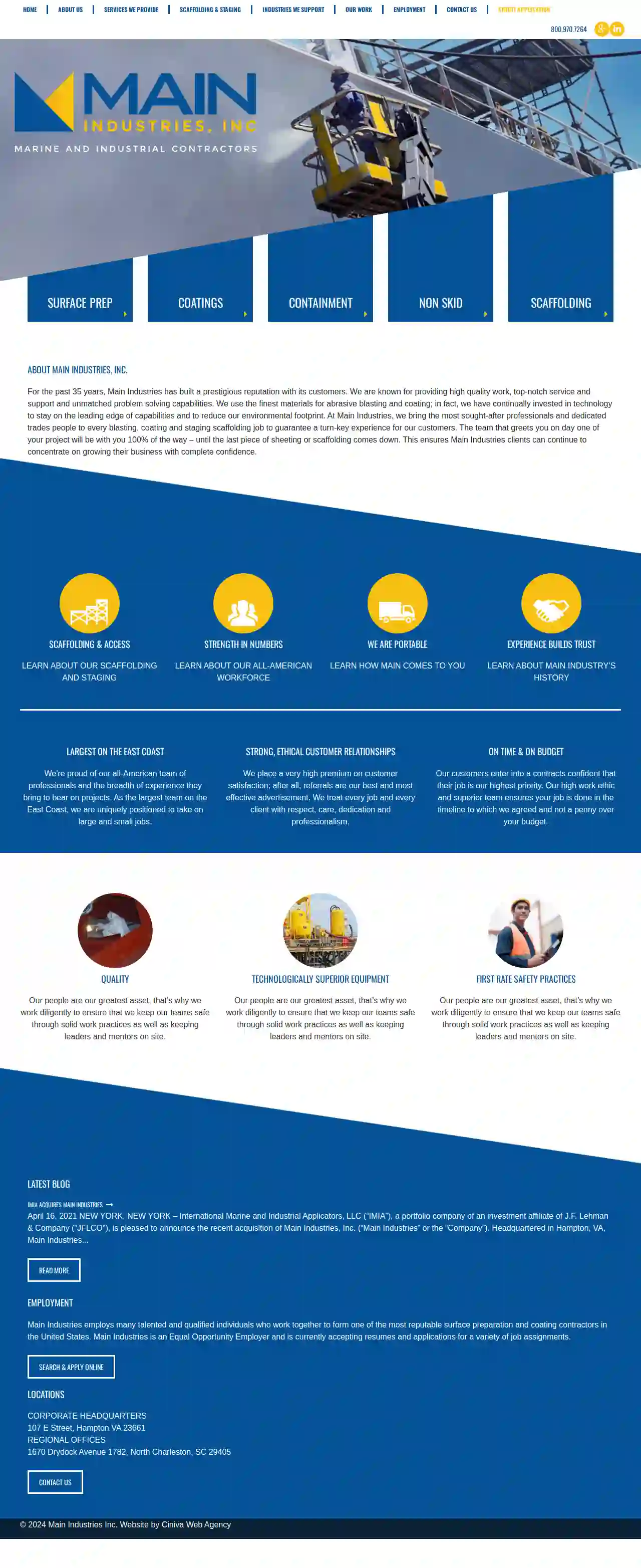
Main Industries, Inc
Hampton, VA, 107 E Street, 23661, USMain Industries, Inc. is a prestigious surface preparation and coating contractor with over 35 years of experience. The company is known for providing high-quality work, top-notch service and support, and unmatched problem-solving capabilities. Main Industries uses the finest materials for abrasive blasting and coating, and has continually invested in technology to stay on the leading edge of capabilities and reduce its environmental footprint. The company brings together the most sought-after professionals and dedicated tradespeople to guarantee a turn-key experience for its customers. The team that greets clients on day one of a project will be with them 100% of the way, ensuring that clients can concentrate on growing their business with complete confidence.
- Services
- Why Us?
- Accreditations
- Gallery
Get Quote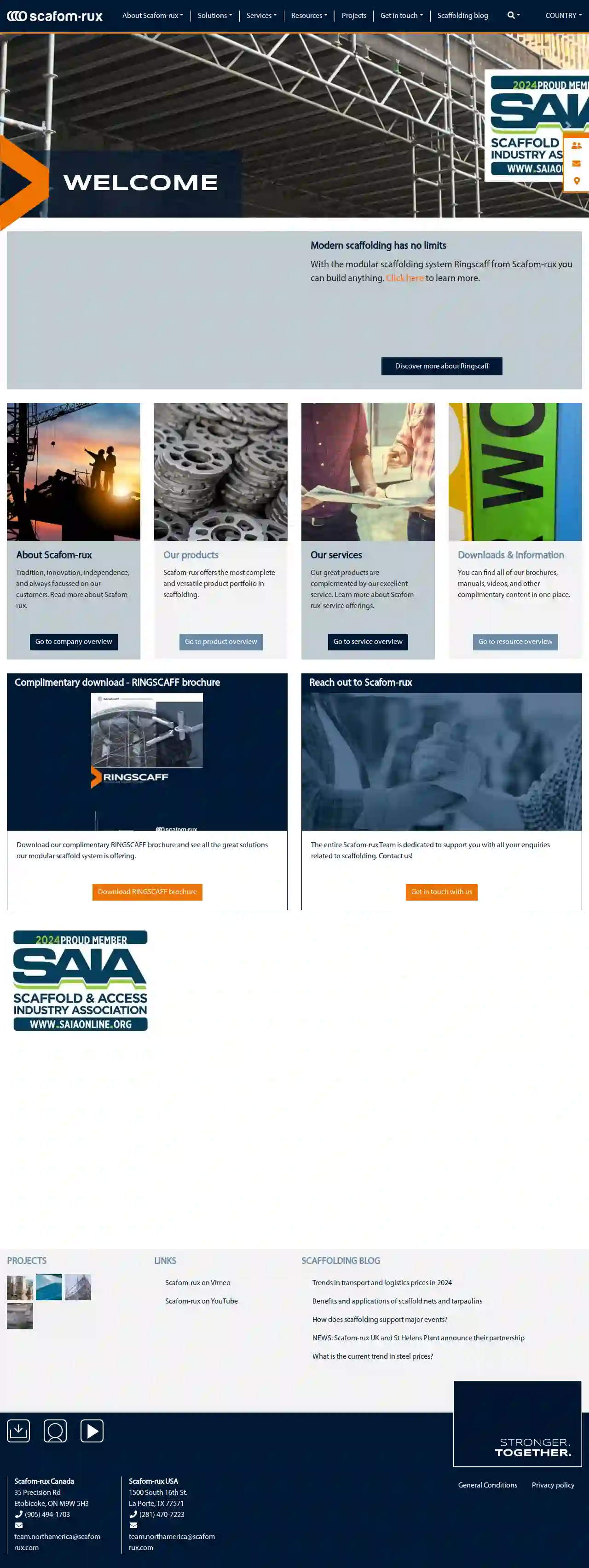
Scafom USA
52 reviews35 Precision Rd, Etobicoke, M9W 5H3, USAbout Scafom-rux Scafom-rux is a leading global provider of innovative and reliable scaffolding solutions. With a rich history of tradition, innovation, and customer focus, we offer a comprehensive range of products and services to meet the diverse needs of our clients in various industries. Our commitment to excellence is reflected in our high-quality products, exceptional service, and unwavering dedication to safety. We strive to be a trusted partner for our customers, providing them with the best possible solutions for their scaffolding requirements.
- Services
- Why Us?
- Gallery
Get Quote
AXIOS Industrial Group - Sulphur
The Woodlands, TX, 10077 Grogans Mill Rd, Suite 450, 77380, USAt Axios Industrial, we're a dynamic industrial service company that values safety, productivity, predictability, and unparalleled expertise. We provide innovative solutions for leaders in the oil and gas, power generation, pulp and paper, agriculture, and pharmaceutical markets. Our team of seasoned professionals is committed to delivering on-time, on-budget solutions that meet our clients' complex needs. With a proven track record of trust, excellence, and safety, we're the trusted partner for your industrial services needs. Our services include scaffolding, insulation, coatings, surface preparation, and specialty services. We use our advanced technology platforms to reduce costs, increase safety, and improve productivity. Our team is dedicated to providing exceptional service and support to our clients. We're headquartered in The Woodlands, Texas, with locations across the US. We're proud to be a leading provider of industrial services and look forward to working with you.
- Services
- Why Us?
- Gallery
Get Quote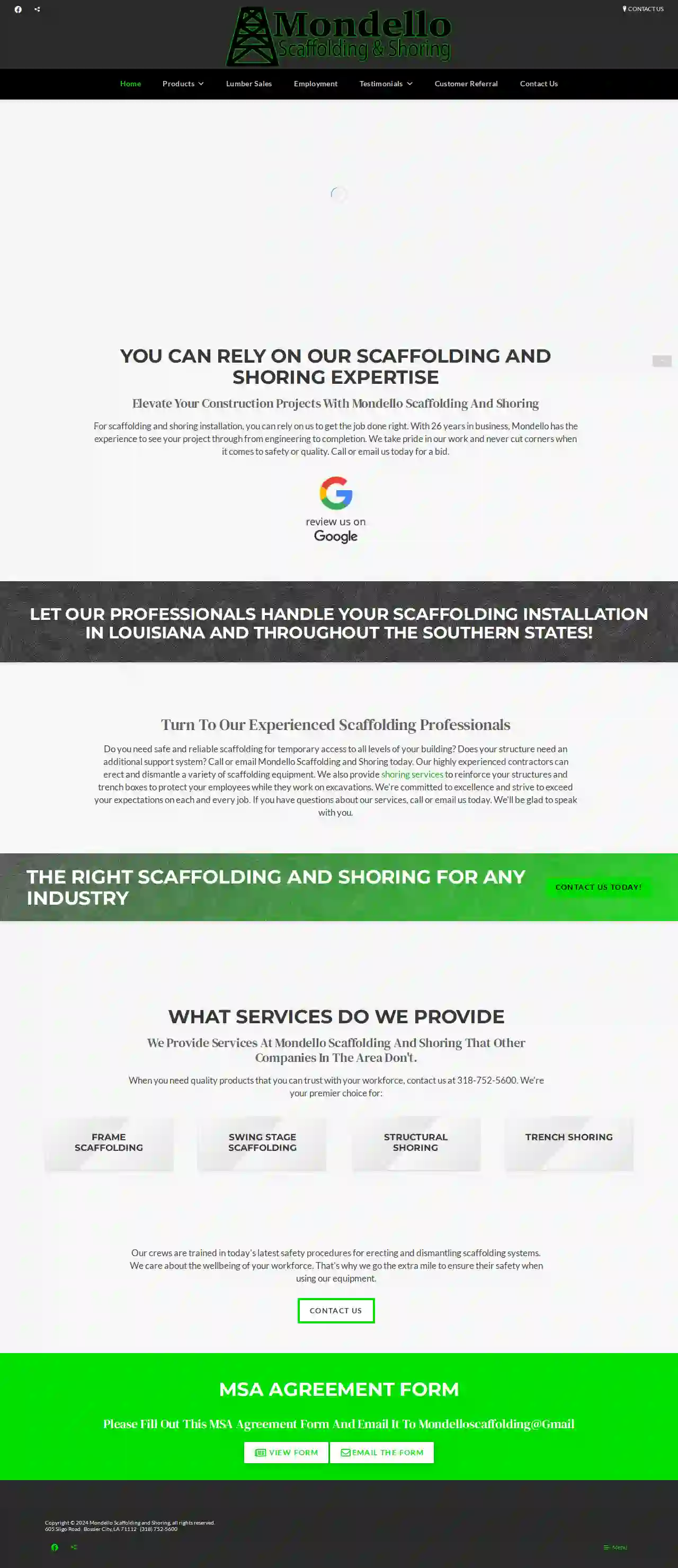
Mondello Scaffolding & Shoring
4.76 reviewsBossier City, LA, 605 Sligo Road, 71112, USMondello Scaffolding and Shoring is a premier provider of scaffolding and shoring services, offering a wide range of solutions for construction projects. With over 26 years of experience, the company prides itself on its commitment to safety, quality, and customer satisfaction. From frame scaffolding to trench shoring, Mondello Scaffolding and Shoring has the expertise and equipment to meet all your construction needs.
- Services
- Why Us?
- Testimonials
- Gallery
Get Quote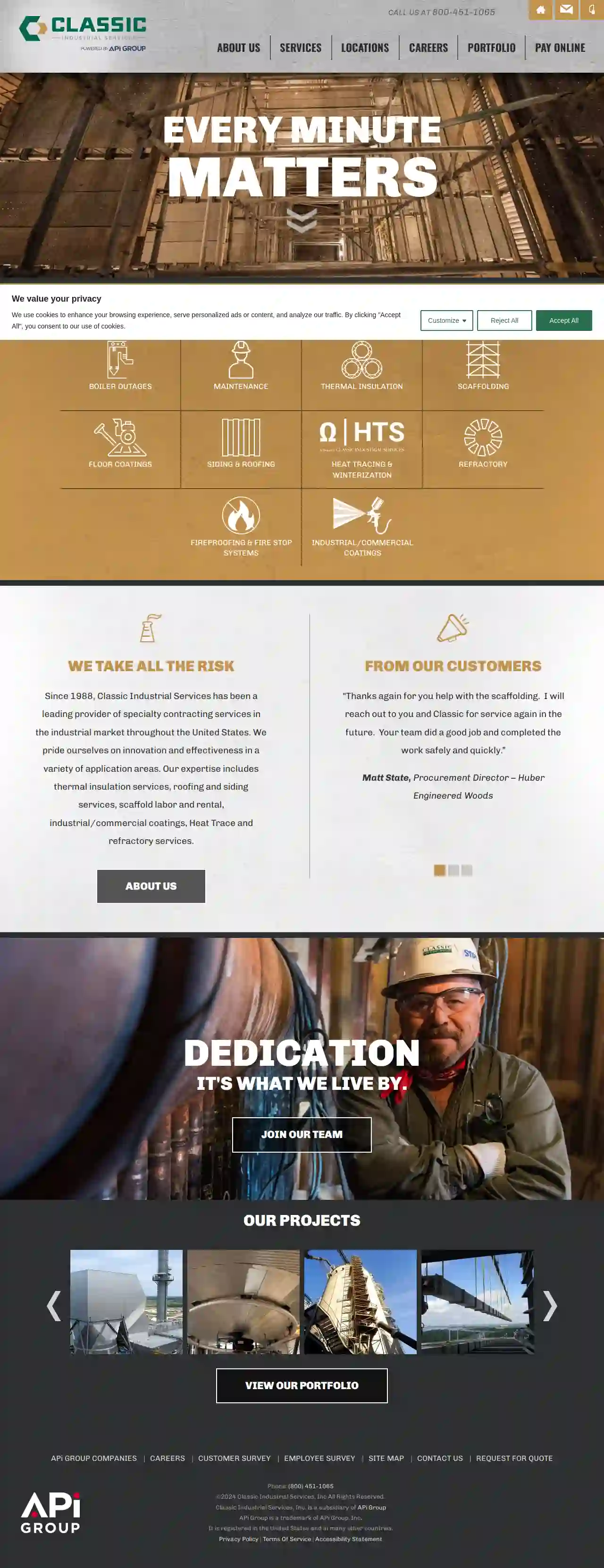
Classic Industrial Services Inc
53 reviews456 Highlandia Drive, Baton Rouge, 70810, USClassic Industrial Services is a leading provider of specialty contracting services in the industrial market throughout the United States. Since 1988, we have been dedicated to innovation and effectiveness in various application areas including thermal insulation services, roofing and siding services, scaffold labor and rental, industrial/commercial coatings, Heat Trace and refractory services. Our core purpose is to provide construction services that make our customers' projects simpler and more successful. We prioritize safety, respect, and fairness in our work, and we are committed to delivering quality work and customer service for every project.
- Services
- Why Us?
- Accreditations
- Our Team
- Testimonials
- Gallery
Get Quote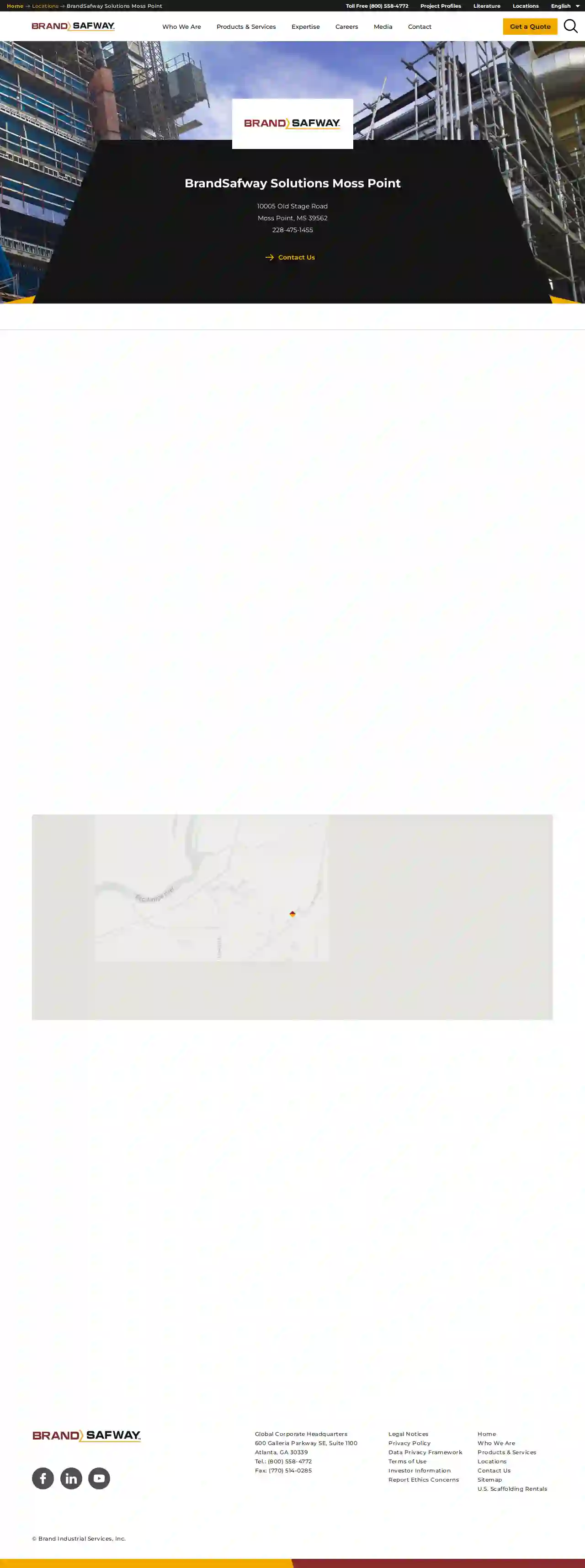
BrandSafway Solutions Moss Point
4.37 reviews123 BrandSafway Blvd, Moss Point, 12345, USBrandSafway is a leading provider of access solutions, including scaffolding, aerial work platforms, and forming and shoring. With a strong commitment to safety, quality, and customer satisfaction, BrandSafway offers a wide range of services tailored to meet the unique needs of clients across various industries. Their team of experienced professionals is dedicated to delivering innovative solutions that enhance efficiency and productivity.
- Services
- Why Us?
- Accreditations
- Our Team
- Testimonials
Get Quote
BrandSafway Services Baltimore-Washington, D.C.
4.225 reviews123 BrandSafway Blvd, Baltimore, 21000, USBrandSafway is a leading provider of access solutions, including scaffolding, aerial work platforms, and forming and shoring equipment. With a strong presence in the Baltimore-Washington, DC area, the company offers a wide range of services tailored to meet the specific needs of clients. BrandSafway's mission is to provide safe, efficient, and innovative solutions that enhance productivity and profitability for its customers. The team consists of experienced professionals dedicated to delivering exceptional service and ensuring customer satisfaction.
- Services
- Why Us?
- Accreditations
- Our Team
- Testimonials
Get Quote
Excel Modular Scaffold & Leasing Corporation
422 reviewsWalker, LA, 17900 Excel Blvd., 70785, USAt Excel Modular Scaffold, our strength is our people, driving our growth and success. We boast the best talent retention record, with highly-trained and seasoned professionals. Our mission: to deliver first-class service with the best industry experts. We EXCEL at what we do. With custom components and approaches for any project, Excel is the solution for complex projects. From airlifting scaffold to temporary jig stands, we are always innovating approaches that will save time and money.
- Services
- Why Us?
- Gallery
Get Quote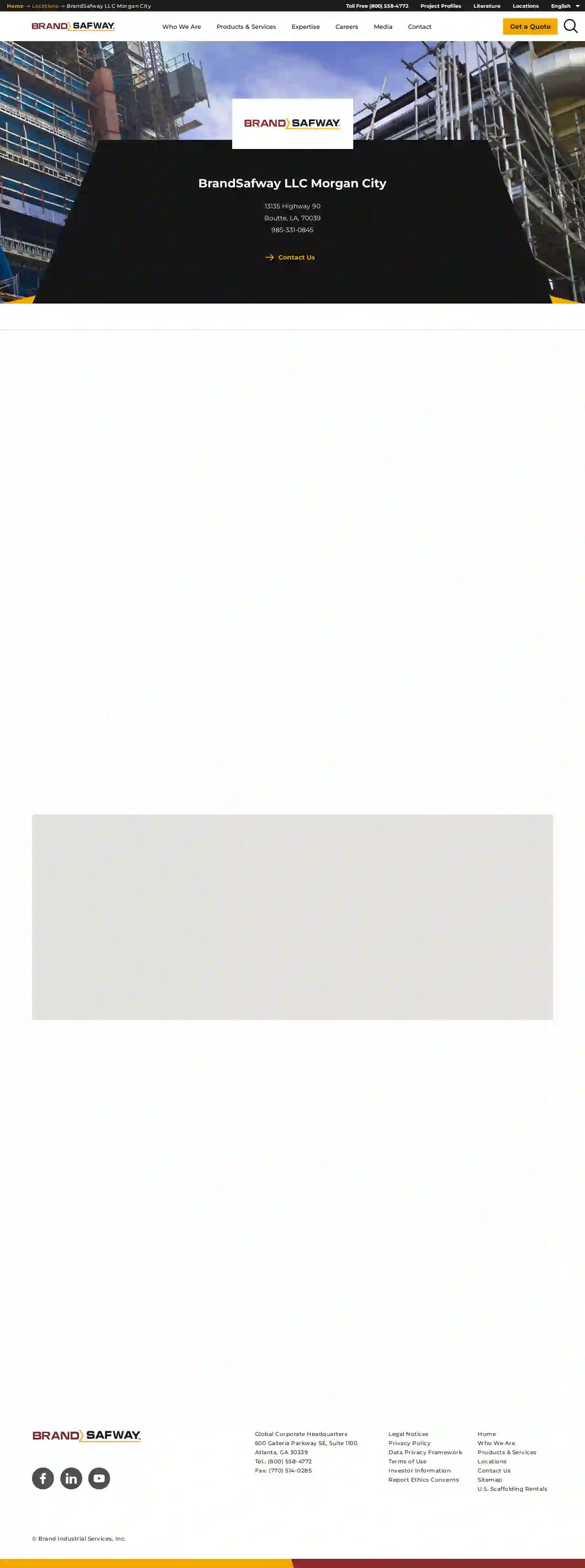
BrandSafway LLC Morgan City
55 reviews123 BrandSafway Blvd, Morgancity, 12345, USBrandSafway is a leading provider of access solutions, including scaffolding, aerial work platforms, and forming and shoring equipment. With a strong commitment to safety, quality, and customer satisfaction, BrandSafway offers a wide range of services tailored to meet the unique needs of clients across various industries. Their team of experienced professionals works closely with clients to understand their requirements and deliver customized solutions that enhance efficiency and productivity. BrandSafway is dedicated to providing innovative solutions that ensure safe and efficient access to any work area, making them a trusted partner for businesses seeking reliable access solutions.
- Services
- Why Us?
- Accreditations
- Our Team
- Testimonials
Get Quote
Over 2,353+ Scaffolding Businesses in our network
Our scaffolding experts operate in Seabrook & surroundings!
ScaffoldingHQ has curated and vetted Top Scaffolding Contractors in and around Seabrook. Find the most reliable pro today.
Frequently Asked Questions About Scaffolding Companies
- Project Size and Complexity: The height, configuration, and accessibility of the scaffolding will influence the amount of materials and labor required.
- Scaffolding Type: Different scaffolding systems (tube and clamp, system scaffolding, suspended scaffolding) have varying costs.
- Duration of Rental: The length of time you need the scaffolding will affect the overall rental price.
- Location: Labor costs and material availability can differ based on your location.
- Additional Services: Some companies may offer additional services like erection, dismantling, or transportation, which can add to the cost.
- Hire Professionals: Just like erection, dismantling should be done by qualified and experienced scaffolding erectors.
- Reverse the Erection Process: The dismantling process should generally follow the reverse order of erection.
- Clear the Area: Ensure the area below is free from people and obstacles.
- Lower Materials Safely: Use ropes or other safe methods to lower dismantled components to the ground.
- Inspect Components: As components are removed, inspect them for damage and store them properly for future use.
- Falls from Height: The most significant risk, often due to lack of guardrails, improper use of safety harnesses, or unstable platforms.
- Falling Objects: Tools, materials, or debris falling from the scaffolding can injure workers or people below.
- Scaffold Collapse: Improper assembly, overloading, or inadequate foundation support can lead to a catastrophic collapse.
- Electrocution: Contact with overhead power lines is a serious hazard when working near electrical infrastructure.
- Slips, Trips, and Falls: Wet or cluttered platforms, uneven surfaces, and loose debris can cause falls.
- Workers: Consider the number of workers on the scaffolding at any given time.
- Materials: Include the weight of building materials, tools, and equipment being used on the platform.
- Environmental Factors: Factor in potential loads from wind or snow, especially for taller scaffolding structures.
How much does scaffolding cost to rent in the USA?
How do I dismantle scaffolding safely?
What are some common scaffolding safety hazards?
What is the weight limit for scaffolding?
How much does scaffolding cost to rent in the USA?
- Project Size and Complexity: The height, configuration, and accessibility of the scaffolding will influence the amount of materials and labor required.
- Scaffolding Type: Different scaffolding systems (tube and clamp, system scaffolding, suspended scaffolding) have varying costs.
- Duration of Rental: The length of time you need the scaffolding will affect the overall rental price.
- Location: Labor costs and material availability can differ based on your location.
- Additional Services: Some companies may offer additional services like erection, dismantling, or transportation, which can add to the cost.
How do I dismantle scaffolding safely?
- Hire Professionals: Just like erection, dismantling should be done by qualified and experienced scaffolding erectors.
- Reverse the Erection Process: The dismantling process should generally follow the reverse order of erection.
- Clear the Area: Ensure the area below is free from people and obstacles.
- Lower Materials Safely: Use ropes or other safe methods to lower dismantled components to the ground.
- Inspect Components: As components are removed, inspect them for damage and store them properly for future use.
What are some common scaffolding safety hazards?
- Falls from Height: The most significant risk, often due to lack of guardrails, improper use of safety harnesses, or unstable platforms.
- Falling Objects: Tools, materials, or debris falling from the scaffolding can injure workers or people below.
- Scaffold Collapse: Improper assembly, overloading, or inadequate foundation support can lead to a catastrophic collapse.
- Electrocution: Contact with overhead power lines is a serious hazard when working near electrical infrastructure.
- Slips, Trips, and Falls: Wet or cluttered platforms, uneven surfaces, and loose debris can cause falls.
What is the weight limit for scaffolding?
- Workers: Consider the number of workers on the scaffolding at any given time.
- Materials: Include the weight of building materials, tools, and equipment being used on the platform.
- Environmental Factors: Factor in potential loads from wind or snow, especially for taller scaffolding structures.